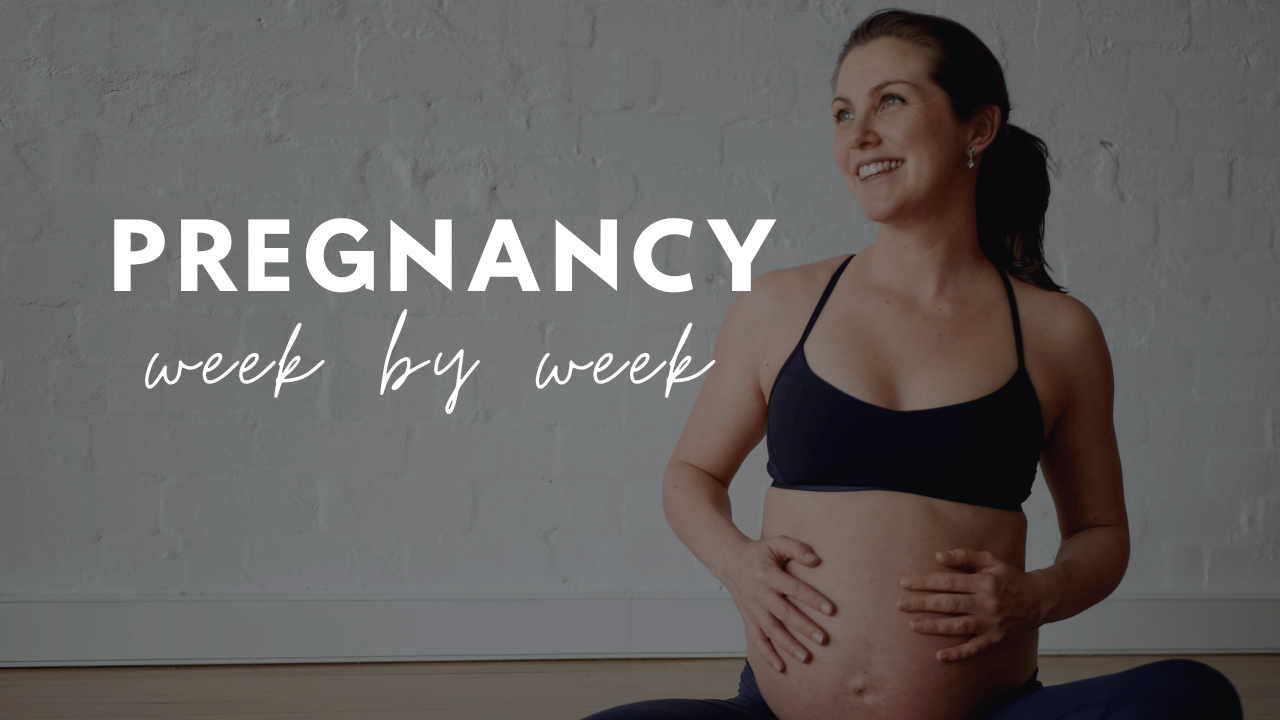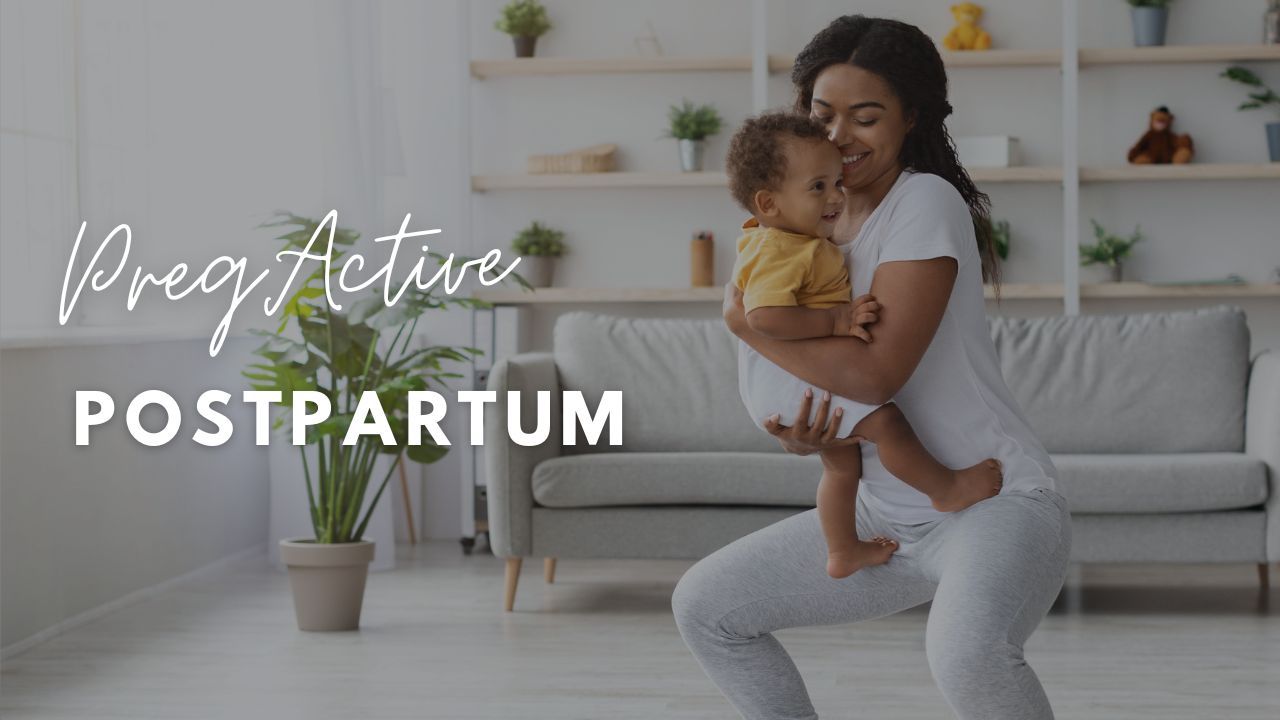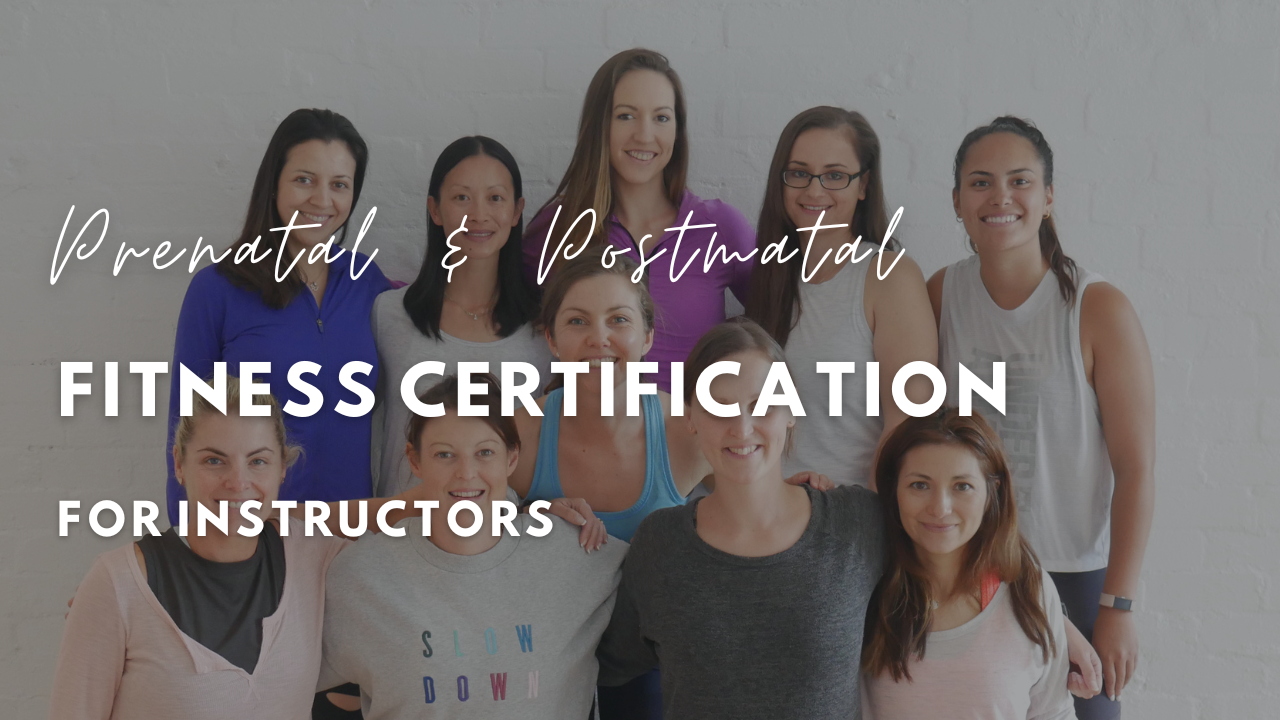Is Pilates Safe during Pregnancy?

Is Pilates Safe during Pregnancy?
I loved my daily workouts when I was pregnant. If you did classes before pregnancy, then no doubt you want to know if Pilates is safe during pregnancy. And the answer to this is Yes!
But not all exercises or movements are safe. What you must do is only attend or participate in safe online prenatal workouts.
Prenatal Pilates is Safe
Prenatal Pilates classes are safe for both mother and baby as long as you have an experienced instructor teaching your class.
Pilates is a recommended form of exercise by many health care specialists due to the numerous benefits when pregnant.
The right class consists of a series of movements and positions which will raise your awareness of your body's strength. Deep breathing and relaxation enhance this awareness.
But just a word of warning!
You must only attend or participate in classes during pregnancy that are taught by qualified instructors.
Why? Because there are some exercises and movements that you must avoid as they can cause harm to both you and your baby.
Is Pilates Safe during Pregnancy?
Yes, absolutely! But the emphasis is on safe exercises when pregnant Because Pilates involves doing a series of controlled, slow, balanced movements it can be enjoyed throughout your pregnancy.
While most moves are very gentle and safe, you still need to know which exercises to avoid.
Safety Tips for Early Pregnancy
Safety should be the top priority when practicing Pilates during the first trimester.
It's essential to avoid:
1. over-exertion
2. overheating
3. lying flat on your back for extended periods.
4. balance-focused movements as your center of gravity shifts.
A qualified prenatal fitness instructor can provide valuable guidance to ensure that you're performing movements that are safe and beneficial for you and your baby.
Red Flags When to Stop
1. Coning/doming in midline
2. Round ligament pain (sharp side pain)
3. Lower back strain or pelvic pressure
4. Dizziness, nausea, or shortness of breath
5. Leaking urine (pelvic floor overload)
How Pilates Improves Mental Health in the First Trimester
The first trimester can be an emotional time as your body undergoes significant changes. Pilates aids in mental health by promoting the release of endorphins, which are natural mood lifters.
The practice's focus on breathing and mindfulness can also reduce stress and anxiety, helping you to maintain a calm and positive outlook.
Our supportive PregActive community and classes can provide social interaction and emotional support, which are invaluable for mental well-being during this joyful yet challenging time.
Best Prenatal Pilates Practices
1. Work with a prenatal-certified instructor
2. Use props: Wedge, stability ball, resistance band, pillow.
3. Focus on breath: Exhale on effort, never hold breath.
4. Engage deep core: Draw belly in/up (TA + pelvic floor lift).
5. Limit class length: 30-45 min max, stay cool and hydrated.
How Often Should You Do Pilates when Pregnant?
You can start by aiming to do two sessions a week when pregnant with at least one day between sessions.
If you are a beginner, start slowly and exercise at a lower intensity, building to moderate intensity. As you make progress you can increase to three session per week.
How Can Pilates Help Me?
The patterns of movement you will learn in our prenatal Pilates classes focus on your tummy and pelvic floor muscles.
These muscles are also known as deep, stabilizing muscles and strengthening them will ultimately help with your posture, balance and strength.
Our PregActive workouts assist by targeting your back, stomach back and pelvic floor muscles without straining other joints.
These exercises activate the deepest layer of your stomach muscles which help to stabilize your back and pelvis.
Many of our exercises are performed on your hands and knees which is an ideal position for pregnancy.
Understanding Pilates and Its Benefits During Pregnancy
Pilates, a system of exercises designed to improve physical strength, flexibility, and posture, is especially beneficial during pregnancy.
These gentle movements focus on core strength and stability, and mind-body awareness which are crucial during the transformative first trimester.
Pilates can help expectant mothers maintain muscle tone and reduce pregnancy discomforts.
Controlled Breathing
By emphasizing controlled breathing and quality of movement over quantity of repetitions, Pilates helps mothers-to-be connect with their changing bodies.
This mindful approach to exercise can aid in managing stress and promoting relaxation, making it an ideal choice for the initial months of pregnancy.
Can You Do Mega-former Pilates while Pregnant?
I would recommend that you avoid moves like mega-former crunches, angel crunch, leg circles and swimmer. These exercises can place too much pressure on the rectus abdominis.
This is not ideal as it can have a negative impact on Diastasis Recti ( abdominal separation ).
Is Yoga or Pilates Better in Pregnancy?
I love both! Both prenatal yoga and Pilates offer similar benefits such as increased strength, flexibility, relaxation and strength. Both focus on helping you to strengthen your core when pregnant.
Pregnancy is the time to keep your core muscles strong to support your posture.
Is it OK to Do Core Exercises?
Yes, it is it safe to do core exercises when pregnant. But not ALL exercises!
And this is where you must have trust in your instructor that they know what exercises a pregnant woman must avoid.
Strengthening your abs when pregnant helps to support your pelvic organs as your baby bump gets bigger.
Benefits of Prenatal Pilates
1. A quicker recovery during the postpartum period.
2. Increased ability to return to your pre-pregnancy body.
3. Reduces back pain.
4. Improve your balance.
5. Help you to maintain a healthy pregnancy weight.
6. Stronger core which helps prevent diastasis.
7. You will gain a stronger connection to the pelvic floor muscles.
8. Stronger pelvic floor muscles help to prevent leakage.
9. Better breath control and relaxation.
10. Help you physically prepare for labor.
11. You will experience less discomfort due to greater strength.
Prenatal Pilates Workout Video
Is Pilates Safe in Pregnancy?
Yes, but as always, consult your doctor first regarding your personal situation. To avoid over-stressing your joints and ligaments during any new exercises; make sure that you can perform a strong pelvic floor contraction.
You do this by squeezing in your pelvic floor muscles and holding the squeeze for at least 10 seconds.
Types of Online Classes
The two basic forms of Pilates are mat-based Pilates and equipment-based Pilates.
The majority of our Pilates exercises are mat-based as the cost of owning or using a Pilates machine is limited to a select few.
1. Mat-based Pilates
This is a series of exercises performed on the floor using gravity and your own body weight to provide resistance.
The main aim is to condition the deeper, supporting muscles of your body to improve posture, balance and coordination
2. Equipment-based Pilates
This includes specific equipment that works against spring-loaded resistance, including the 'reformer', which is a move-able carriage that you push and pull along its tracks.
Some forms of Pilates also include light weights that offer resistance to the muscles.
What's Safe in Prenatal Pilates
1. Side-Lying Leg Lifts / Clams
2. Cat-Cow / Bird-Dog
3. Seated TA Breathing and Pelvic Tilts
4. Wall Push / Standing Chest Press
What to Avoid or Modify
1. Supine Exercises
2. Deep Spinal Flexion
3. Open Twists
4. Prone Exercises
5. Double Leg Lowering
6. Plank on Toes
5 Prenatal Pilates Exercises You Can Do at Home
Exercise 1 Seated Curl Back
Reps: 10
Rest: 15 seconds
Exercise 2 Squat Holds
Instructions: I want you to stand as tall as you can with your feet spread shoulder-width apart while making sure you maintain your balance.
Lower your body by pushing your hips back and bending your knees. Slowly push yourself back up.
Sets: 2
Reps: 5 x 10 second holds
Rest: 15 seconds
Exercise 3 Lunge with Lateral Raise
Instructions: Grab a light weight, this could be a water bottle filled up.
Stand straight holding a light weight in each hand at arm's length (palms facing inward).
Step into a lunge position starting with your right leg.
Then bend your knee until your front thigh is parallel to the floor, don't go lower. Maintain your balance at all times.
As you bend, raise your left arm lateral to shoulder height. Return to starting position and repeat with the opposite leg and arm.
Sets: 2
Reps: 10 each side
Rest: 15 seconds
Exercise 4 Squat with Arm Raise
Instructions: With the arms down in front of your body, slowly bend at the hips and keep the back straight.
Lower yourself into a squat as shown as you raise your arms above your head. At the bottom of the squat push both feet into the ground to return to standing.
Sets: 2
Reps: 10
Rest: 15 seconds
Exercise 5 All Fours Opposite Arm and Leg
Instructions: Start on your hands and knees then when ready, slowly extend one leg straight out behind you as the opposite arm moves forward.
Hold 3-5 seconds then slowly bring your leg back down and repeat with the opposite leg. if you can repeat 5-10 times on each side.
Sets: 2
Reps: 10 each side
Rest: 15 seconds
Pilates is not for everyone so please consult your doctor if you:
1. Have a pre-existing musculoskeletal injury.
2. Recently had or having surgery.
3. Experienced a pre-existing medical condition (e.g. heart disease).
4. Have not exercised for a long time.
5. Your age is 40 years and older.
6. Are excessively overweight or obese.
Pilates Workout 20 minutes
So you just found out that you are pregnant. And now you are wondering if you can do a prenatal Pilates workout in the 1st trimester of pregnancy.
Visit PregActive pregnancy for more workouts.
Yes, you can!
BUT it must be safe and suitable for your stage of pregnancy and the workout you do must be taught by a qualified and experienced PregActive pregnancy fitness instructor.
Can I Still Attend Traditional Pilates Classes?
My PregActive classes have been specifically designed and are tailored to pregnant women and therefore do not include all movements you may encounter during an ordinary Pilates class.
When you attend a class, you must ensure your qualified trainer to teach pregnant women.
Some of the positions in these classes (lying on your stomach or back) are not suitable for pregnant women, especially late term pregnancy.
If you do participate in external Pilates sessions please advise your personal trainer and ensure they are aware of what exercises you should and should not be doing if pregnant.
If you can't attend one of our classes, then you can still gain access to my video workouts and exercises online at PregActive Pregnancy.
What is PregActive Prenatal Pilates?
Prenatal Pilates is a recommended form of exercise by many prenatal exercise specialists due to the numerous benefits when pregnant. It consists of a series of movements and positions which will raise your awareness of your body's strength.
Deep breathing and relaxation enhance this awareness.
We include various Pilates movements into your workouts.
The patterns of movement you will learn in our prenatal Pilates classes focus on your tummy and pelvic floor muscles.
These muscles are also known as deep, stabilizing muscles and strengthening them will ultimately help with your posture, balance and strength.
Our Pilates movements are performed without placing additional strain on your body
Can Classes Help Me?
Our prenatal Pilates workouts assist by targeting your back, stomach back and pelvic floor muscles without straining other joints.
These exercises activate the deepest layer of your stomach muscles which help to stabilize your back and pelvis. Many of our exercises are performed on your hands and knees which is an ideal position for pregnancy.
As your baby grows and develops your pelvic floor muscles are increasingly put under strain.
Relaxin Hormone
The hormone relaxin is making the ligaments that connect your bones more pliable which can result in injury as these ligaments are likely to stretch more than usual and if you overload them.
Weakened 'pelvic floor muscles' may become less tight and move lower down into your pelvis under the weight of your baby in which you will find it more difficult to squeeze and hold these muscles.
The resultant effect of this is that you may leak small amounts of urine when you cough or sneeze.
Can I Start Pilates Now I am Pregnant?
Yes, but as always, consult your doctor first regarding your personal situation. Your first trimester is a good time to start.
To avoid over-stressing your joints and ligaments during any new exercises; make sure that you can perform a strong pelvic floor contraction by squeezing in your pelvic floor muscles.
And holding the squeeze for at least 10 seconds.
Pilates Classes at My Local Studio?
My PregActive workouts have been specifically designed and are tailored to pregnant women and therefore do not include all movements you may encounter during an ordinary Pilates class.
Some of the positions in these classes (lying on your stomach or back;) are not suitable for pregnant women. So you can attend an in-studio Pilates class, but only if it is a dedicated prenatal Pilates class.
Especially late term pregnancy!
If you do participate in a Pilates class, please advise your instructor and ensure they are aware of what exercises you should and should not be doing if pregnant.





